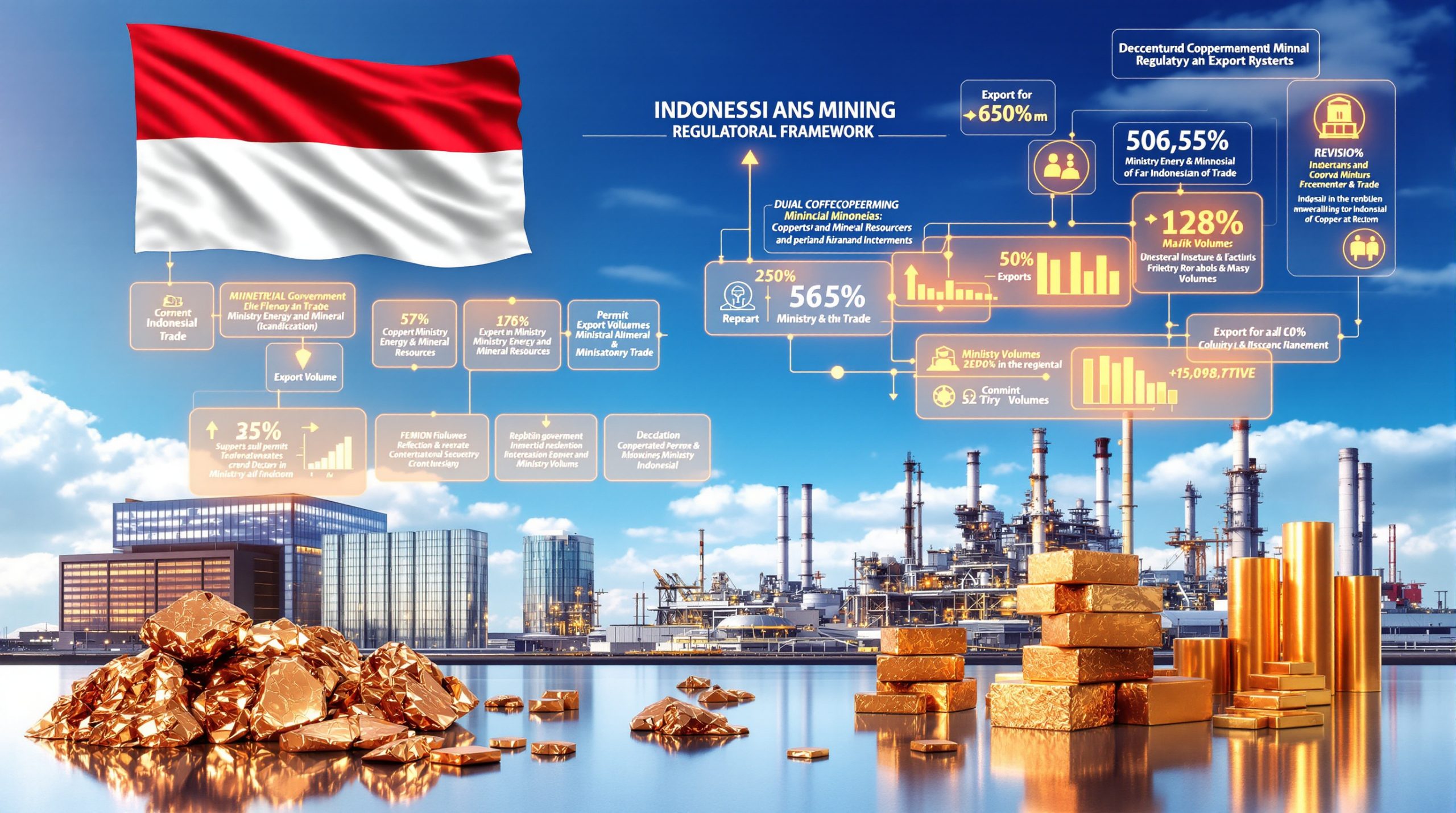The Morila Gold Mine Revival: How Flagship Gold's Partnership is Reshaping Mali's Mining Landscape
Mali's mining sector is undergoing significant transformation with the adoption of a new mining code in August 2023. This regulatory framework increases state control by allowing up to 30% government ownership in new mining projects and eliminates key tax exemptions previously enjoyed by foreign investors. Despite these more restrictive conditions, the code has attracted its first American investment through Flagship Gold's partnership with Mali's state-owned mining company to revitalize the historic Morila gold mine.
The partnership, signed on October 9, 2025, represents a strategic shift in Mali's approach to foreign investment in its mineral resources. This agreement between New York-based Flagship Gold and the Mineral Resources Research and Exploitation Company (SOREM) marks a significant milestone in Mali's mining industry evolution.
Mali's new regulations reflect a broader trend of resource nationalism observed across the Sahel region, where military-led governments in neighboring countries like Niger, Guinea, and Burkina Faso are asserting greater control over natural resources. This approach aims to secure more significant benefits from mineral wealth for host countries while still attracting necessary foreign technical expertise and capital.
What Makes the Morila Gold Mine Historically Significant?
The Legacy of Mali's "Million-Dollar-Per-Day" Mine
The Morila gold mine, located in the southern city of Sanso in Mali's Sikasso region, was once one of Africa's most productive gold operations. During its peak production years under previous operators Barrick Gold and AngloGold Ashanti, the mine earned the nickname "Morila the Gorilla" for its impressive output and economic impact on the region.
The mine became renowned for its exceptional high-grade ore and substantial contribution to Mali's economy, establishing the country as a significant player in Africa's gold mining sector. Its historical performance created thousands of jobs and generated substantial tax revenues for the Malian government.
Production History and Decline
The mine experienced several operational phases throughout its lifespan:
- Initial high-grade production period (early 2000s) under Barrick Gold and AngloGold Ashanti management
- Transition to lower-grade stockpile processing as primary reserves depleted
- Eventual operational challenges leading to declining output and efficiency
- Australia's Firefinch acquisition and subsequent abandonment in 2022
The decline culminated in the Malian government's symbolic $1 acquisition of an 80% stake from Firefinch in June 2025, reflecting both the mine's depleted state and the challenges of operating in Mali's evolving regulatory environment.
Despite these challenges, the mine still contains estimated reserves of 2.5 million ounces of gold, suggesting significant potential for revival under the right operational and investment conditions.
Why is the Flagship Gold Partnership Strategically Important?
First American Investment Under New Mining Code
The October 2025 agreement between New York-based Flagship Gold and Mali's Mineral Resources Research and Exploitation Company (SOREM) represents a significant milestone as the first U.S. investment under Mali's revised mining framework. This partnership signals potential renewed Western interest in Mali's mineral sector despite the country's tightened regulations.
The deal comes at a time when Russian and Chinese companies have been expanding their presence in Mali through state-backed arrangements, making this American investment particularly notable from a geopolitical perspective.
Economic Revival Potential
With estimated reserves of 2.5 million ounces of gold, the Morila mine revival comes at an opportune moment for both the investor and the host country:
| Factor | Impact on Morila Revival |
|---|---|
| Gold Price | Currently exceeding $4,000/oz, enhancing project economics |
| Mali's Production Decline | 32% year-on-year drop to 26.2 tonnes by August 2025 |
| Employment Potential | Hundreds of direct and indirect jobs for local communities |
| Foreign Exchange | Critical revenue source for Mali's economy |
The project represents an important test case for balancing state control with the need for foreign investment and expertise. As Mali's Mines Minister Amadou Keita stated, this is viewed as a "win-win partnership" that could potentially serve as a model for future investments in the country's mining sector.
How Does the Deal Structure Work?
Ownership and Management Framework
While specific financial terms remain undisclosed, the agreement allows Flagship Gold to acquire equity in Morila SA, the operating company. The Malian government, which gained control of the mine in June 2025 through its symbolic $1 purchase from Firefinch, will maintain significant ownership in line with the country's resource nationalism strategy.
This structure reflects the requirements of Mali's 2023 mining code, which allows up to 30% government ownership in new mining projects. The deal's specific equity distribution has not been publicly detailed, with Flagship Gold signs deal to revive Mali's Morila mine reporting that the company is currently unable to disclose further information beyond what is publicly available.
Operational Responsibilities
The partnership divides responsibilities between:
- Flagship Gold: Technical expertise, operational management, and capital investment
- SOREM (Mali's state mining company): Government oversight and stakeholder management
This structure attempts to balance Mali's desire for greater control over its mineral resources with the practical need for experienced mine operators and international capital. The division of responsibilities recognizes the complementary strengths each partner brings to the project.
What Challenges Does the Project Face?
Security Concerns in Mali's Mining Regions
The Morila mine operates in a region facing complex security dynamics, including:
- Regional jihadist activity across the Sahel
- Community tensions over resource distribution
- Artisanal mining conflicts
- Political instability in neighboring countries
These security considerations add operational complexity and potential risk premiums to the project's economics. Mining companies operating in Mali have increasingly needed to implement enhanced security protocols and community engagement strategies to mitigate these risks.
Technical Mining Challenges
The revival faces several operational hurdles:
- Transitioning from depleted higher-grade zones to lower-grade resources
- Potential need for deeper mining and increased stripping ratios
- Water management in a semi-arid environment
- Power supply reliability for continuous operations
- Equipment refurbishment or replacement requirements
Addressing these technical challenges will require significant capital investment and mining expertise, highlighting the importance of Flagship Gold's operational capabilities in the partnership.
Regulatory Uncertainty
Despite the new mining code, investors remain concerned about:
- Potential for further regulatory changes under military leadership
- Stability of fiscal terms throughout project life
- Community development obligations and implementation
- Environmental compliance requirements and enforcement
The success of the Morila project could help establish precedent and expectations for how Mali's regulatory framework will be applied in practice, potentially reducing uncertainty for future investors.
What Does This Mean for Mali's Gold Industry?
Reversing Production Decline
Mali's position as one of Africa's leading gold producers has been threatened by a significant production decline. The 32% year-on-year drop in industrial gold output by August 2025 highlights the urgent need for new investment and operational revivals like the Morila project.
This decline has occurred despite Mali historically being among Africa's top gold producers, with the sector serving as a crucial source of foreign exchange and government revenue. The Morila revival represents an opportunity to reverse this trend and demonstrate Mali's continued viability as a gold market performance destination.
Balancing Resource Nationalism and Foreign Investment
The Flagship Gold partnership represents Mali's attempt to navigate competing priorities:
- Maximizing state benefits from mineral resources
- Attracting necessary technical expertise and capital
- Maintaining international credibility with investors
- Addressing local development needs
The success of this balancing act will likely determine whether Mali can attract additional foreign investment in its mining sector while achieving its resource nationalism objectives.
Geopolitical Implications
The entry of an American company into Mali's gold sector carries broader significance:
- Diversification beyond Russian and Chinese mining interests that have dominated recent investments
- Potential signal to other Western investors about Mali's openness
- Test case for resource nationalism in practice
- Benchmark for future mining partnerships under the new regulatory framework
How this partnership develops could influence Western investment appetite in Mali and potentially other resource-rich countries in the Sahel region pursuing similar resource nationalism strategies.
How Does the Global Gold Market Context Impact the Project?
Record Gold Prices Enhancing Project Economics
The revival of Morila coincides with gold prices analysis showing values surpassing $4,000 per ounce, creating favorable economics for previously marginal operations. This price environment provides a cushion against the higher costs associated with:
- More restrictive fiscal terms under the new mining code
- Security premiums in the Sahel region
- Technical challenges of mining remaining resources
- Capital requirements for mine refurbishment
These record prices significantly improve the project's financial viability, creating a window of opportunity for successful revival despite challenging operational conditions.
Supply Chain Considerations
Global gold supply chains face increasing scrutiny regarding:
- Responsible sourcing requirements from major markets
- Environmental impact reporting and carbon footprint considerations
- Human rights considerations, particularly in conflict-affected regions
- Conflict mineral regulations affecting West African producers
The Morila project will need to address these concerns to access international markets effectively, particularly as ESG (Environmental, Social, and Governance) standards continue to evolve in the gold sector.
What Are the Environmental and Social Considerations?
Community Development Obligations
Under Mali's new mining code, operators face enhanced requirements for:
- Local employment and skills development programs
- Community infrastructure investment (health, education, water)
- Transparent benefit-sharing mechanisms
- Stakeholder engagement and consultation processes
Meeting these obligations will be crucial for maintaining social license to operate and avoiding community conflicts that could disrupt operations. Effective community engagement could become a competitive advantage for the Morila project.
Environmental Management Challenges
The mine revival must address:
- Legacy environmental issues from previous operations
- Water management in a water-stressed region
- Tailings storage facility management and safety
- Mine closure and rehabilitation planning
- Monitoring and mitigation of ecosystem impacts
Effective environmental management is increasingly important not only for regulatory compliance but also for access to financing and international markets. The project's approach to these challenges will set important precedents for Mali's mining sector.
What Does This Mean for Investors?
Investment Implications
The Morila revival offers insights for mining investors considering Mali:
- Potential for profitable operations despite more restrictive regulations
- Importance of strong government relationships and local partnerships
- Need for robust security and risk management systems
- Value of community support for operational continuity
- Advantage of entering during high gold price forecast environments
These considerations apply not only to Mali but increasingly to mining investments across the broader Sahel region as resource nationalism trends continue.
Signals for Future Mining Investments
The success or failure of the Flagship-Morila partnership will likely influence:
- Willingness of other Western companies to invest in Mali
- Government approaches to future mining agreements
- Community expectations for mining benefits
- Industry standards for operating in complex jurisdictions
- Balance of Western versus Russian/Chinese investment in the region
Investors will be watching closely to determine whether this project provides a viable model for navigating Mali's new regulatory landscape.
A Test Case for Mali's Mining Future
The partnership between Flagship Gold and Mali's government represents more than just the revival of a single mine. It serves as a critical test case for whether Mali can balance its resource nationalism ambitions with the practical need for foreign investment and expertise. The success of this venture could potentially open doors for further Western investment in Mali's mining sector, while failure might reinforce the trend toward state-controlled operations with primarily Russian and Chinese partners.
As gold investment strategies evolve in response to historic highs, the economic opportunity is significant. However, the operational, security, and regulatory challenges remain substantial. The coming months will reveal whether this partnership can successfully navigate these complexities to restore Morila's position as a significant contributor to Mali's gold industry.
What is the current status of the Morila gold mine?
The Morila gold mine is being revitalized through a partnership between New York-based Flagship Gold and Mali's state-owned mining company SOREM, with operations expected to restart following the October 9, 2025 agreement. The government acquired an 80% stake in June 2025 for a symbolic $1 after previous operator Firefinch abandoned the mine in 2022.
How much gold remains at the Morila mine?
The mine contains estimated reserves of 2.5 million ounces of gold, making it a significant resource despite its previous operational challenges. At current gold prices exceeding $4,000 per ounce, the contained value represents a substantial economic opportunity if extraction can be achieved economically.
Why did the previous operator abandon the mine?
Australia's Firefinch abandoned operations in 2022 due to declining output, rising operational costs, and challenges operating under Mali's evolving regulatory environment. The mine had transitioned from high-grade zones to lower-grade resources, affecting its economic viability under previous gold price conditions.
How does Mali's new mining code affect foreign investors?
The mining code adopted in August 2023 increases state control by allowing up to 30% government ownership in new projects and eliminates key tax exemptions previously enjoyed by foreign investors. These changes reflect Mali's resource nationalism strategy aimed at securing greater benefits from its mineral resources for the state and local communities.
What impact could this project have on Mali's economy?
If successful, the revival could help reverse Mali's 32% year-on-year decline in industrial gold production, create hundreds of direct and indirect jobs, generate foreign exchange, and potentially signal renewed investor confidence in Mali's mining sector. The project could also establish a precedent for successful public-private partnerships under Mali's new regulatory framework.
Further Exploration:
Readers interested in learning more about gold mining developments in West Africa can explore related educational content from Mali secures first US mining investment, which provides ongoing coverage of mining sector developments across the African continent.
Ready to Spot the Next Major Mineral Discovery?
Don't miss out on potentially transformative investment opportunities in the mining sector. Visit Discovery Alert's dedicated discoveries page to understand how their proprietary Discovery IQ model helps investors identify significant ASX mineral discoveries before the broader market reacts.




